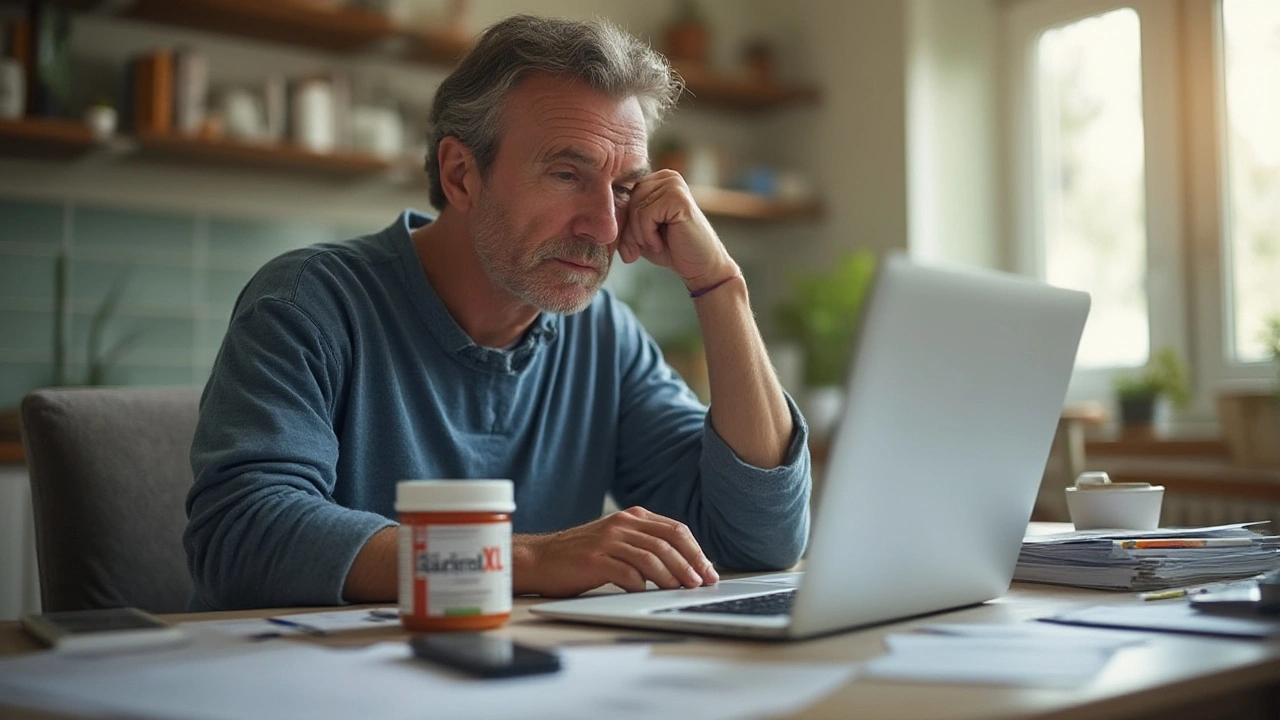Glucotrol XL Safety: Key Tips for Using This Diabetes Pill Wisely
Glucotrol XL is the extended‑release form of glipizide, a sulfonylurea that pushes your pancreas to release more insulin. It’s popular because it’s taken once a day, but like any drug it comes with its own safety checklist. Below you’ll find straight‑forward advice to keep you on the right track, avoid nasty surprises, and make the most of your blood‑sugar control.
How to Take Glucotrol XL Correctly
First things first: swallow the tablet whole with a full glass of water. Do NOT split, chew, or crush it – the extended‑release coating would break down too fast and could cause a sudden insulin surge. Take it at the same time each morning, preferably after breakfast, so your body gets into a routine.
Dosage starts low, often 5 mg, and your doctor may increase it by 2.5‑5 mg every 1‑2 weeks until your fasting blood sugar lands in the target range. Never jump to a higher dose on your own; the step‑wise approach helps you spot side effects early.
Spotting Common Side Effects (and When to Call the Doctor)
Most people feel fine, but a few reactions pop up more often than you’d think. The biggest one is low blood sugar, or hypoglycemia. Symptoms include shaky hands, sweating, rapid heartbeat, confusion, or sudden hunger. If you notice any of these, grab a fast‑acting carb like juice or glucose tablets, then re‑check your sugar after 15 minutes.
Other frequent issues are mild nausea, headache, or a rash. These usually fade as your body adjusts. However, if you develop a severe skin reaction, persistent vomiting, or notice your blood sugar staying low despite eating, get medical help right away.
Rare but serious concerns involve liver problems or a drop in white‑blood‑cell count. Watch for jaundice (yellow eyes or skin), unusual bruising, or persistent fever. Those signs need urgent attention.
Drug Interactions You Shouldn't Ignore
Glucotrol XL can team up with other meds in ways that boost hypoglycemia risk. Common culprits include:
- Other diabetes drugs (especially insulin or meglitinides)
- Beta‑blockers, which may mask low‑blood‑sugar symptoms
- Some antibiotics like fluoroquinolones
- Anti‑malaria pills (e.g., quinine)
Always hand your pharmacist a complete list of everything you’re taking – prescription, over‑the‑counter, and supplements.
Practical Everyday Tips
• Keep a blood‑sugar log. Write down readings before meals, two hours after meals, and at bedtime. Patterns will tell you if your dose needs tweaking.
• Pair the pill with consistent meals. Skipping breakfast after taking Glucotrol XL is a fast route to low sugar.
• Stay hydrated. Dehydration can make blood‑sugar spikes feel worse and can hide symptoms.
• Carry a medical ID or a card that says you’re on Glucotrol XL. In an emergency, this helps responders give the right care.
When to Review Your Treatment
Schedule a check‑up every three months, or sooner if you notice any new symptoms. Your doctor will look at your A1C, kidney function, and liver enzymes. If your A1C stays above target despite good adherence, it may be time to consider a different medication class.
Remember, safety isn’t a one‑time checkbox. It’s about staying aware, checking your numbers, and keeping open communication with your healthcare team. Follow these tips, and Glucotrol XL can be a reliable tool in your diabetes toolbox.
-
23
Find out the safest and smartest ways to buy Glucotrol XL online in 2025. Learn essential tips, compare pharmacy options, and ensure you get real diabetes medication.
Categories
Tags Weight
- online pharmacy
- side effects
- dietary supplement
- dosage
- online pharmacy safety
- drug interactions
- health benefits
- allergy relief
- autoimmune disease
- antibiotic
- pharmacy reviews
- affordable antidepressant
- gut health
- safe online meds
- prevention
- patient safety
- NSAIDs
- drug interaction
- medication safety
- blood thinners

